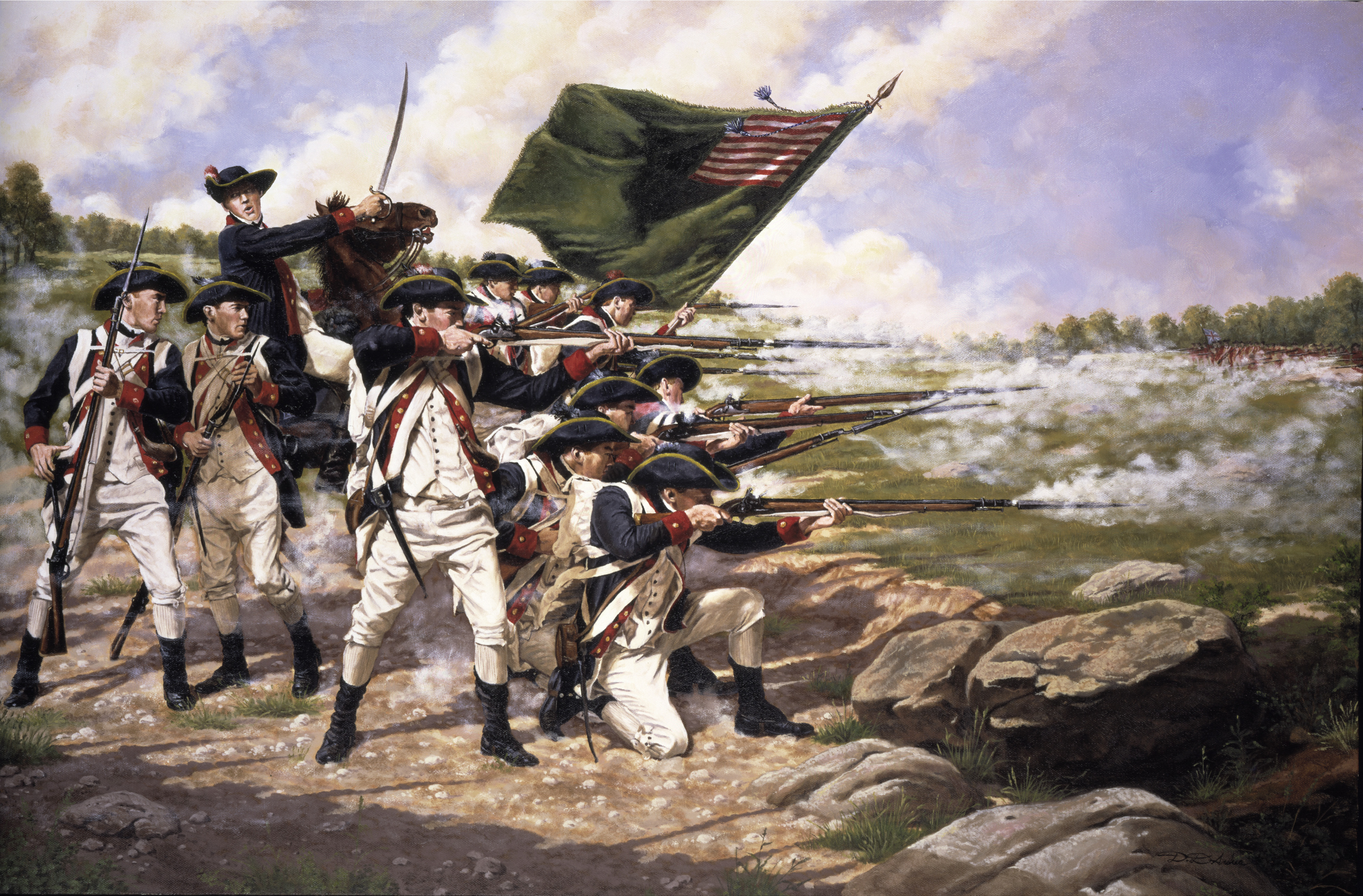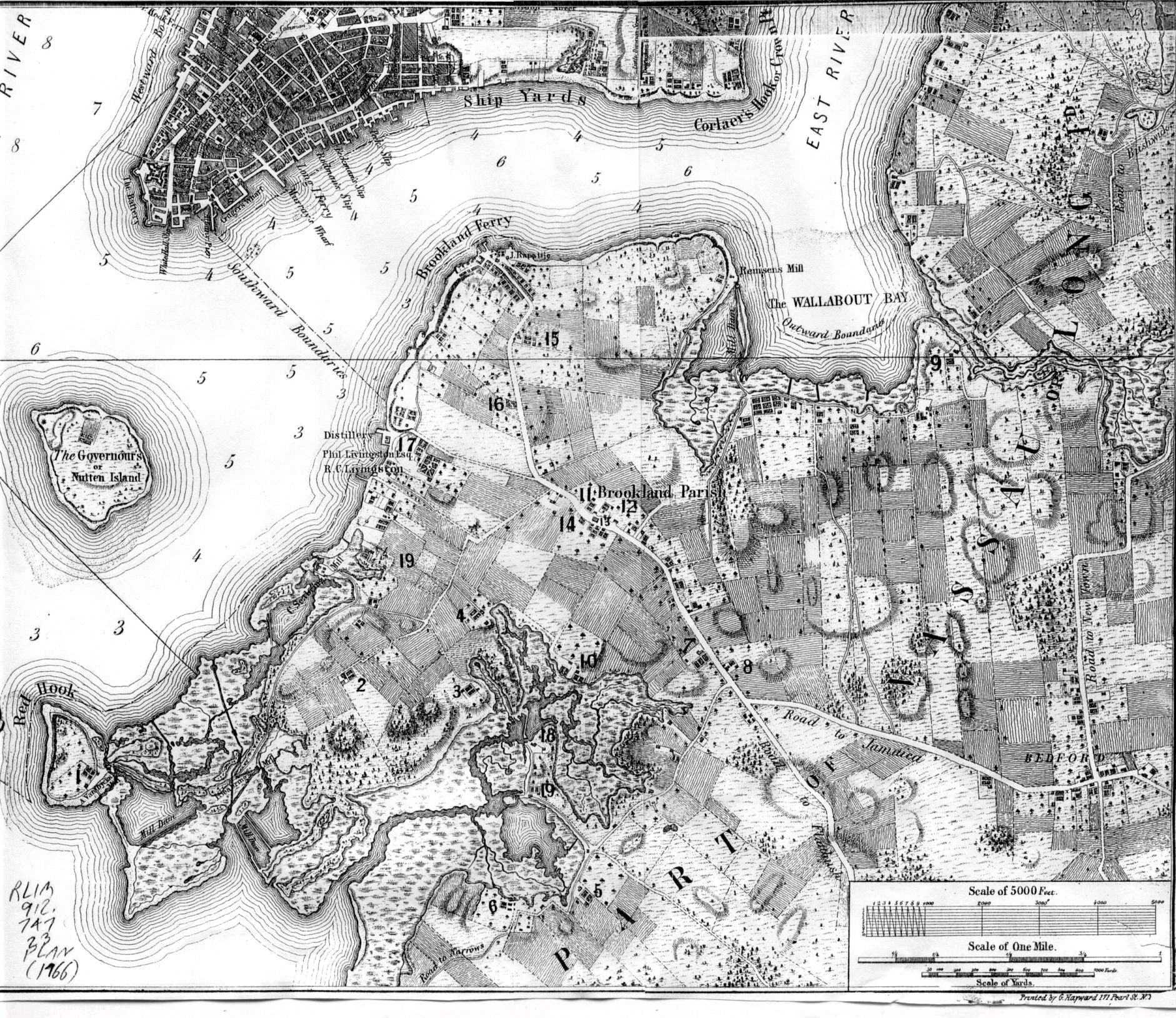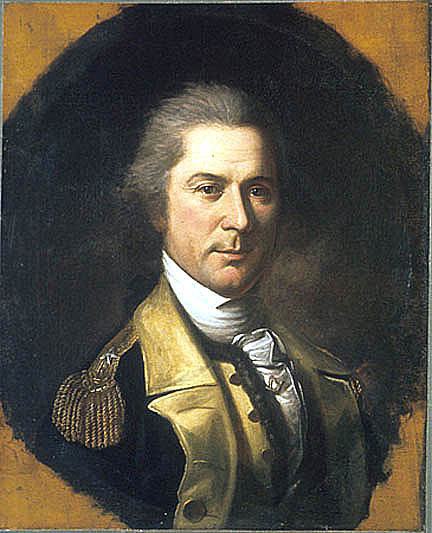|
Maryland Line
The "Maryland Line" was a formation within the Continental Army, formed and authorized by the Second Continental Congress, meeting in the "Old Pennsylvania State House" (later known as "Independence Hall") in Philadelphia, Pennsylvania in June 1775. Background Col. George Washington, delegate and formerly of the Virginia Regiment of the colonial militia, served as commander-in-chief of the colonial forces and he assumed command at Cambridge, Massachusetts outside of Boston, of the various units from several of the American colonies which surrounded Boston, laying siege to the British Army in June 1775. Washington's previous military experience had been during the late French and Indian War (1754–1763), (known in Europe as the Seven Years' War). Not all Continental infantry regiments raised in a state were part of a state quota. On December 27, 1776, the Second Continental Congress gave commanding General George Washington temporary control over certain military decisions that t ... [...More Info...] [...Related Items...] OR: [Wikipedia] [Google] [Baidu] |
Continental Army
The Continental Army was the army of the United Colonies (the Thirteen Colonies) in the Revolutionary-era United States. It was formed by the Second Continental Congress after the outbreak of the American Revolutionary War, and was established by a resolution of Congress on June 14, 1775. The Continental Army was created to coordinate military efforts of the Colonies in their war for independence against the British, who sought to keep their American lands under control. General George Washington was the commander-in-chief of the army throughout the war. The Continental Army was supplemented by local militias and volunteer troops that were either loyal to individual states or otherwise independent. Most of the Continental Army was disbanded in 1783 after the Treaty of Paris formally ended the fighting. The 1st and 2nd Regiments of the Army went on to form what was to become the Legion of the United States in 1792. This became the foundation of what is now the United States ... [...More Info...] [...Related Items...] OR: [Wikipedia] [Google] [Baidu] |
1st Maryland Regiment
The 1st Maryland Regiment (Smallwood's Regiment) originated with the authorization of a Maryland Battalion of the Maryland State Troops on 14 January 1776. It was organized in the spring at Baltimore, Maryland (three companies) and Annapolis, Maryland (six companies) under the command of Colonel William Smallwood consisting of eight companies and one light infantry company from the northern and western counties of the colony of Maryland. History On 6 July 1776, the Maryland Battalion was assigned to the main Continental Army. On 12 August 1776, it was assigned to Stirling's Brigade and five days later (17 August 1776) adopted into the main Continental Army. On 31 August, the Maryland Battalion was reassigned from Stirling's Brigade to McDougall's Brigade. On 19 September 1776 the Maryland Independent Companies were assigned to the Maryland Battalion. This element was relieved from McDougall's Brigade on 10 November 1776. From 10 December 1776 to January 1777, the element was ... [...More Info...] [...Related Items...] OR: [Wikipedia] [Google] [Baidu] |
Battle Of White Plains
The Battle of White Plains was a battle in the New York and New Jersey campaign of the American Revolutionary War, fought on October 28, 1776 near White Plains, New York. Following the retreat of George Washington's Continental Army northward from New York City, British General William Howe landed troops in Westchester County, intending to cut off Washington's escape route. Alerted to this move, Washington retreated farther, establishing a position in the village of White Plains but failed to establish firm control over local high ground. Howe's troops drove Washington's troops from a hill near the village; following this loss, Washington ordered the Americans to retreat farther north. Later British movements chased Washington across New Jersey and into Pennsylvania. Washington then crossed the Delaware and surprised a brigade of Hessian troops in the December 26 Battle of Trenton. Background British General William Howe, after evacuating Boston in March 1776, reg ... [...More Info...] [...Related Items...] OR: [Wikipedia] [Google] [Baidu] |
Maryland 400
The Maryland 400 were members of the 1st Maryland Regiment who repeatedly charged a numerically superior British force during the Battle of Long Island during the American Revolutionary War, Revolutionary War, sustaining heavy casualties, but allowing George Washington, General Washington to successfully evacuate the bulk of his troops to Manhattan. This action is commemorated in Maryland's nickname, the "Old Line State." A monument in Brooklyn and multiple plaques were put up in the memory of this regiment and the fallen soldiers. Mustering and engagement The 115th Infantry claims lineage back to the earliest militia units formed to protect the frontier of western Maryland. The birthdate of the unit, 14 June 1775, is also the birthdate of the United States Army. The first two companies to leave Maryland were rifle companies, assembled in Frederick, Maryland in the summer of 1775 under the command of Captains Cresap and Price; they were organized in response to the Continental ... [...More Info...] [...Related Items...] OR: [Wikipedia] [Google] [Baidu] |
Mordecai Gist
Mordecai Gist (1743–1792) was a member of a prominent Maryland family who became a brigadier general in command of the Maryland Line in the Continental Army during the American Revolutionary War. Life Gist was born in Baltimore, Maryland (one source says Reisterstown, Maryland), the fourth child of Thomas and Susannah Cockey Gist. Thomas Gist's father, Captain Richard Gist (1684 – August 28, 1741), was the surveyor of Maryland's Eastern Shore and one of the commissioners who laid out Baltimore Town in 1729. Richard Gist's father, Christopher Richard Gist (1655 or 1659 – Feb. 1690), was an English emigrant who came to the Province of Maryland before 1682 and settled in "South Canton" on the south bank of the Patapsco River. Christopher Richard Gist married Edith Cromwell (1660–1694), who is believed to have been a relative of Oliver Cromwell. Gist was the nephew of Christopher Gist (1706–1759), a son of Richard Gist. Christopher Gist was a Colonial-era explorer, scout, ... [...More Info...] [...Related Items...] OR: [Wikipedia] [Google] [Baidu] |
Battle Of Long Island
The Battle of Long Island, also known as the Battle of Brooklyn and the Battle of Brooklyn Heights, was an action of the American Revolutionary War fought on August 27, 1776, at the western edge of Long Island in present-day Brooklyn, New York. The British defeated the Americans and gained access to the strategically important Port of New York, which they held for the rest of the war. It was the first major battle to take place after the United States declared its independence on July 4, and in troop deployment and combat, it was the largest battle of the war. After defeating the British in the siege of Boston on March 17, commander-in-chief George Washington relocated the Continental Army to defend the port city of New York, located at the southern end of Manhattan Island. Washington understood that the city's harbor would provide an excellent base for the Royal Navy, so he established defenses there and waited for the British to attack. In July, the British, under the ... [...More Info...] [...Related Items...] OR: [Wikipedia] [Google] [Baidu] |
2nd Independent Maryland Company – Somerset County
The Second Independent Maryland Company - Somerset County was an infantry company formed on the orders of the Maryland Convention for the protection of the province during the American Revolutionary War. History On January 1, 1776, the Maryland Convention, meeting in Frederick Town order the creation of seven "independent" companies of infantry, one of these was Second Independent Maryland. On the following day, the convention elected the officer corps of the company with John Gunby as captain, Uriah Forrest as 1st lieutenant, William Bowie as second lieutenant and Benjamin Brooks as third lieutenant. The troops of the company were made up men from Somerset County, Maryland and numbered a hundred and three men, including officers. In the early part of the war, the Second Independent Maryland Company spent much of their time patrolling southern Maryland and breaking up Tory camps which were to be found on the lower part of the peninsula as Somerset County was a leading T ... [...More Info...] [...Related Items...] OR: [Wikipedia] [Google] [Baidu] |
Maryland And Virginia Rifle Regiment
The Maryland and Virginia Rifle Regiment, most commonly known as Rawlings' Regiment in period documents, was organized in June 1776 as a specialized light infantry unit of riflemen in the Continental Army during the American Revolutionary War. The American Long rifle, rifle units complemented the predominant, musket-equipped, line infantry forces of the war with their long-range marksmanship capability and were typically deployed with the line infantry as forward skirmishers and flanking elements. Scouting, escort, and outpost duties were also routine. The rifle units' battle formation was not nearly as structured as that of the line infantry units, which employed short-range massed firing in ordered line (formation), linear formations. The riflemen could therefore respond with more adaptability to changing battle conditions. The Maryland and Virginia Rifle Regiment consisted of nine Company (military unit), companies—four from Maryland and five from Virginia. The two-state comp ... [...More Info...] [...Related Items...] OR: [Wikipedia] [Google] [Baidu] |
German Battalion
The "German Battalion" (also known as the "German Regiment" or 8th Maryland) was an infantry formation of the Continental Army during the American Revolutionary War. Authorized in May 1776 as an extra Continental regiment, the battaltion recruited ethnic Germans from Maryland and Pennsylvania. The Continental Congress appointed Nicholas Haussegger to command the battalion, which initially organized in the strength of eight companies. While the unit assembled at Philadelphia, a ninth company was added. It fought at Trenton in December 1776, where its men called out in German for the Hessians to lay down their arms. A week later, the German Battalion was in action at Assunpink Creek where a number of its troops were captured, including Haussegger. The next day, the unit fought at Princeton. After Haussegger defected to the British, George Washington appointed the Prussian volunteer Henry Leonard d'Arendt to command the battalion. The battalion served with the 1st Virginia ... [...More Info...] [...Related Items...] OR: [Wikipedia] [Google] [Baidu] |
7th Maryland Regiment
The 7th Maryland Regiment was authorized on 16 September 1776, for service with the Continental Army and was assigned on 27 December 1776. The regiment was composed of eight companies of volunteers organized from Frederick and Baltimore counties of the colony of Maryland. On 22 May 1777, it was assigned to the 1st Maryland Brigade. Re-organized on 12 May 1779 to nine companies. The 1st Maryland Brigade was re-assigned to the Southern Department on 5 April 1780. The regiment participated in the Philadelphia Campaign which occurred during 1777-1778 and the Southern Theater which occurred during 1775-1782. The 7th Maryland Regiment was involved in the major battles including: Battle of Brandywine, Battle of Germantown, Battle of Monmouth, Battle of Camden and the Battle of Guilford Court House. The regiment was disbanded on 1 January 1783, at Annapolis, Maryland. References * External links *Bibliography of the Continental Army in Marylandcompiled by the United States ... [...More Info...] [...Related Items...] OR: [Wikipedia] [Google] [Baidu] |
6th Maryland Regiment
The 6th Maryland Regiment, active from 27 March 1776—January 1, 1783, is most notable for its involvement during the American Revolutionary war of the same years. An infantry type regiment consisting of 728 soldiers, the 6th Maryland was composed of eight companies of volunteers from Prince Georges, Queen Anne's, Fredric, Cecil, Harford, and Ann Arundel counties in the colony of Maryland On 22 May 1777, the regiment was assigned to the 2nd Maryland Brigade. It was re-organized to nine companies on 12 May 1779 and reassigned to the Southern Department on 5 April 1780. Background Since the establishment of the American colonies, the British Navy protected the developing colonies, and the colonist paid taxes to the crown through import and export tariffs, taxes, and when requested, raised armies for London. This laissez-faire system where the colonist had a large degree of self-rule worked until 1763, when the British government decided that it needed to raise capital to pay off ... [...More Info...] [...Related Items...] OR: [Wikipedia] [Google] [Baidu] |
5th Maryland Regiment
The 5th Maryland Regiment is a designation which has been held by several units over the years, not all of which necessarily share the same lineage and honors. Although the first unit to carry the "5th Maryland" designation was organized in 1776 from volunteers in rural Maryland, the designation has been most often associated with militia units in Baltimore. The "5th Maryland" designation is the officially recognized traditional designation of the 175th Infantry Regiment, Maryland Army National Guard. This entry refers to the rural 5th Maryland, whose lineage is separate and distinct from the Baltimore 5th Maryland perpetuated by the 175th Infantry Regiment. American Revolution The first 5th Maryland Regiment was organized on March 27, 1776, composing of eight companies of volunteers from the counties of Queen Anne's, Kent, Caroline, and Dorchester of the colony of Maryland and was authorized on September 16, 1776, for service with the Continental Army. It was assigned to the ... [...More Info...] [...Related Items...] OR: [Wikipedia] [Google] [Baidu] |





